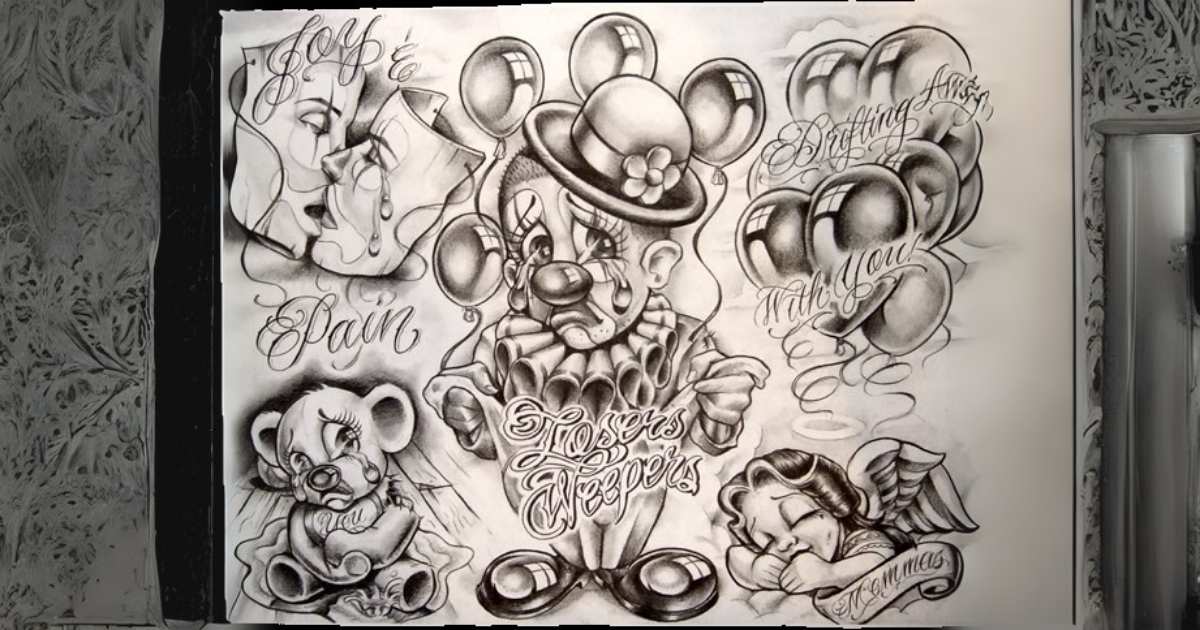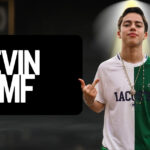Art speaks louder than words. Your teddy bear’s about to get a cultural makeover that’ll make abuela proud while honoring centuries of rich tradition.
Chicano teddy bear drawing ideas blend the comfort of childhood memories with the vibrant soul of Mexican-American culture. These aren’t just cute sketches—they’re powerful expressions of identity, history, and community pride wrapped in fuzzy, lovable packages.
The Chicano art movement emerged during the 1960s civil rights era, transforming walls, canvases, and hearts across America. Artists used bold colors, religious imagery, and cultural symbols to reclaim their narrative. Today, we’re bringing that same energy to teddy bear artwork, creating pieces that celebrate heritage while sparking conversations about identity and belonging.
Why teddy bears? These universal symbols of comfort and love become perfect canvases for cultural expression. A bandana bear tells stories of resilience. A heritage sketch featuring Aztec symbols connects modern children to ancient wisdom. Each drawing becomes a bridge between generations.
This comprehensive guide covers 20+ unique Chicano teddy bear concepts. From beginner-friendly mariachi musicians to complex Aztec warriors, you’ll find detailed instructions, cultural context, and artistic techniques for every skill level. We’ll explore traditional symbolism, color meanings, and respectful representation while building your technical drawing abilities.
Ready to transform simple teddy bears into powerful cultural ambassadors? Let’s dive into this creative journey that honors the past while inspiring future artists.
El Mariachi Bear
Traditional mariachi culture meets teddy bear charm in this classic drawing idea. The mariachi bear captures Mexico’s musical soul through intricate costume details and proud posturing.
Start with the iconic charro outfit—the foundation of any respectable mariachi bear. Black pants feature silver buttons running down each side seam, called botonadura. These aren’t random decorations; they represent wealth and status in traditional Mexican culture. Draw them as small ovals with highlights to show their metallic shine.
Essential Mariachi Elements
Costume Components:
- Sombrero: Wide-brimmed with decorative stitching
- Chaquetilla: Short, fitted jacket with ornate embroidery
- Corbata: Traditional bow tie or string tie
- Faja: Colorful sash around the waist
- Botines: Pointed boots with decorative stitching
The guitar becomes your bear’s most important accessory. Position it diagonally across the body, with tiny paws gripping the neck and sound hole. Add cultural music bear details like inlaid mother-of-pearl patterns around the sound hole and decorative rosettes.
Color choices matter deeply here. Traditional mariachi outfits use deep blacks and silvers as primary colors, with gold accents on embroidery. The sombrero often features silver threading in geometric patterns—draw these as thin, overlapping lines that catch imaginary light.
“Mariachi music isn’t just entertainment; it’s storytelling through song, carrying generations of joy and sorrow.” – Cultural Arts Historian Maria Gonzalez
Shading techniques bring your performer teddy to life. Use cross-hatching for the black fabric’s texture, leaving small highlights to suggest the material’s sheen. The silver buttons need strong contrast—dark shadows underneath with bright white highlights on top.
Don’t forget facial expression! Your traditional music bear should radiate pride and joy. Slightly raised eyebrows suggest concentration while a small smile hints at the music’s emotional connection.
Lowrider Bear
Street art bear culture meets automotive passion in this dynamic customized bear design. Lowrider culture represents more than cars—it’s about family, community, and artistic expression through mechanical craftsmanship.
Your lowrider bear needs attitude and style. Position the bear leaning against or sitting in a classic lowrider—think 1964 Chevy Impala or 1979 Cadillac Eldorado. These cars aren’t just transportation; they’re rolling art galleries representing years of love, money, and skill.
Lowrider Design Elements
| Component | Details | Drawing Tips |
| Hydraulics | Chrome cylinders, fluid lines | Use white highlights on curved surfaces |
| Wire Wheels | Spoke patterns, chrome finish | Draw radiating lines from center hub |
| Paint Job | Metallic flakes, murals | Layer colors for depth, add sparkle dots |
| Interior | Velvet upholstery, chain steering wheels | Use soft shading for fabric texture |
The car bear should sport classic lowrider fashion. Think perfectly pressed khaki pants, white tank top, and a bandana—either worn on the head or hanging from the back pocket. These aren’t stereotypes; they’re authentic cultural markers representing pride in appearance and attention to detail.
Chrome details require special attention. Real chrome reflects everything around it, so your drawing needs multiple light sources. Use a blending stump to create smooth gradients on curved surfaces, then add sharp white highlights where light hits directly.
Automotive art demands understanding of perspective. The car should appear three-dimensional, not flat. Use vanishing points to ensure proper proportions—the front end should look closer than the rear, with details gradually becoming smaller.
Color theory becomes crucial for metallic finishes. Start with base colors, then add highlights and reflections. Purple cars might have pink highlights. Green vehicles could show yellow reflections. Each surface tells a story about surrounding light and atmosphere.
Your cruising teddy represents more than artistic skill. It honors communities that transformed necessity into beauty, turning transportation into cultural expression. Every detail—from tire shine to window tint—deserves respectful attention.
La Catrina Bear
Día de los Muertos symbolism transforms your teddy into a celebration of life’s eternal cycle. La Catrina isn’t about death—she represents the truth that death visits everyone equally, making life itself more precious and beautiful.
José Guadalupe Posada created the original Catrina in the early 1900s as political commentary. Diego Rivera later immortalized her in murals, and today she symbolizes Mexican culture’s healthy relationship with mortality. Your cultural heritage bear continues this artistic legacy.
Catrina Design Elements
Face Paint Patterns:
- Symmetrical designs around eye sockets
- Floral motifs on forehead and cheeks
- Geometric patterns connecting facial features
- Delicate line work suggesting bone structure
- Colorful accents in traditional Day of the Dead colors
Start with the skull face—but make it beautiful, not scary. Use thin, precise lines to outline bone structure without making it grotesque. The eye sockets become canvases for intricate patterns: roses, diamonds, swirls, and dots that celebrate rather than frighten.
The floral crown deserves special attention. Traditional flowers include marigolds (cempasúchil), roses, and baby’s breath. Each petal requires individual attention—don’t just draw circular blobs. Real marigold petals have ruffled edges and layered surfaces that catch light differently.
Elegant dress details complete your holy art bear transformation. La Catrina typically wears Victorian-era clothing—high necklines, puffed sleeves, and flowing skirts. Add lace trim using dotted lines and small circular patterns that suggest delicate fabric.
“La Catrina teaches us that death is not the opposite of life, but part of it. She dances with mortality, making it beautiful rather than fearsome.” – Art Historian Dr. Elena Ramirez
Color symbolism matters tremendously here. Purple represents mourning and magic. Orange and yellow honor marigolds that guide spirits home. White suggests purity and new beginnings. Avoid random color choices—each hue carries cultural weight.
Cultural sensitivity remains paramount. This isn’t Halloween decoration but sacred tradition. Research Día de los Muertos customs, understand the holiday’s meaning, and approach your devotional teddy with respect and knowledge.
Your religious bear becomes a bridge between worlds—connecting childhood innocence with profound cultural wisdom about life’s preciousness and death’s inevitability.
Aztec Warrior Bear
Ancient civilizations meet modern art in this powerful warrior teddy design. Aztec warriors weren’t just fighters—they were scholars, artists, and spiritual leaders who understood warfare as both physical and metaphysical struggle.
Your tribal bear needs historically accurate details. Aztec military rankings included cuachic (veteran warriors), otomies (elite troops), and tlahuiztli (decorated fighters). Each rank wore distinct regalia indicating battlefield achievements and social status.
Warrior Regalia Components
Headdress Elements:
- Eagle feathers: Primary flight feathers for highest rank
- Quetzal plumes: Iridescent green tail feathers
- Geometric patterns: Jade, gold, and obsidian decorations
- Symbolic animals: Jaguar spots, eagle talons, serpent scales
- Ritual significance: Each element represents spiritual power
Feathered headdress construction demands patience and precision. Start with the basic silhouette—most warrior headdresses flare upward and outward, creating impressive profiles. Each feather needs individual attention: flight feathers have asymmetrical barbs, while down feathers appear fluffy and soft.
The Aztec cultural bear carries traditional weapons. Macuahuitl (obsidian-edged clubs) were devastating battlefield tools. Draw the wooden base first, then add obsidian blades as small, dark triangular shapes embedded along the edges. These weren’t primitive weapons—they could decapitate horses and slice through Spanish armor.
Shield design offers opportunities for complex geometric patterns. Aztec shields (chimalli) featured feathered mosaics, precious metal inlays, and spiritual symbols. Use compass and ruler for perfect circles and triangles—precision matters in representing mathematical sophistication.
Earth tone color schemes reflect available pigments and spiritual beliefs. Ochre reds represent blood and life force. Deep browns suggest fertile earth. Turquoise blue (highly prized) indicates divine connection. Gold accents represent the sun’s power.
Aztec Symbolism Table
| Symbol | Meaning | Drawing Application |
| Eagle | Solar power, warrior spirit | Wing patterns, talon details |
| Jaguar | Night, underworld, strength | Spotted patterns, fierce expression |
| Serpent | Earth, wisdom, transformation | Scaled textures, curved forms |
| Obsidian | Sacrifice, sharp truth | Reflective black surfaces |
Muscle definition shows your headdress bear’s physical prowess. Aztec warriors trained constantly—their bodies reflected dedication and discipline. Use anatomical knowledge to suggest strength without exaggeration. Subtle muscle lines under the fur indicate power and capability.
Historical accuracy honors these remarkable people. Aztecs created floating gardens, performed complex surgery, and built architectural marvels. Your drawing represents their sophisticated culture, not Hollywood stereotypes.
Pachuco Bear
1940s zoot suit styling brings jazz age rebellion to your teddy bear canvas. Pachuco culture emerged during World War II, when young Mexican-Americans created distinctive fashion and slang that challenged mainstream expectations while asserting cultural pride.
The zoot suit wasn’t just clothing—it was political statement. During fabric rationing, wearing oversized suits suggested defiance of wartime restrictions. Your pachuco bear embodies this spirit of cultural resistance and creative self-expression.
Zoot Suit Components
Essential Style Elements:
- High-waisted trousers: Pleated front, tapered ankles
- Long coat: Knee-length with padded shoulders
- Wide-brimmed hat: Tilted at confident angle
- Chain wallet: Hanging from belt to pocket
- Two-tone shoes: Often black and white spectators
Hat angles communicate attitude and personality. A slight forward tilt suggests confidence. Tilted to one side implies casual coolness. Pulled low over eyes creates mysterious appeal. The hat becomes your bear’s most expressive feature.
Fabric draping requires understanding of how heavy wool behaves. Zoot suit pants gathered at the waist with deep pleats that create horizontal folds. The coat’s weight pulls it straight down from padded shoulders, creating clean vertical lines.
Chain accessories add authentic period details. Pocket watches on long chains were both functional and decorative. Draw the chain’s individual links—small ovals connected in flowing curves. The watch itself needs Roman numerals and ornate hands.
“Pachucos didn’t just wear clothes; they wore armor against discrimination, suits of cultural pride that said ‘We exist, we matter, we’re here.'” – Fashion Historian Dr. Carlos Martinez
Historical context deepens your artwork’s meaning. The Zoot Suit Riots of 1943 saw servicemen attack young Mexican-Americans wearing these outfits. Your drawing honors those who faced violence for expressing their identity through fashion.
Pose suggestions capture pachuco attitude. Hands in pockets with thumbs out shows casual confidence. Leaning against walls suggests street-smart awareness. Standing straight with shoulders back demonstrates pride and defiance.
Fabric texture rendering brings your drawing to life. Wool suits have subtle nap that catches light differently than smooth cotton. Use directional strokes following the fabric’s grain. Add occasional highlights where pressed creases create sharp edges.
Street Art Bear
Urban artistic expression transforms your teddy into a canvas celebrating community creativity and cultural resistance. Street art isn’t vandalism—it’s democracy in action, giving voice to neighborhoods often ignored by mainstream galleries.
Your graffiti bear sits within or creates urban art landscapes. Think about the wall behind your bear: weathered brick, chain-link fences, or concrete surfaces all tell different stories about neighborhood character and history.
Street Art Techniques
Spray Paint Effects:
- Overspray: Soft edges where paint drifts beyond intended lines
- Drips: Vertical runs when paint accumulates too thickly
- Fade effects: Gradual color transitions using multiple passes
- Stencil precision: Sharp edges contrasting with freehand areas
- Color layering: Building intensity through multiple applications
Background integration makes your spray art bear feel authentic. Street art responds to existing architecture—artists work around windows, incorporate building features, and respect community spaces. Your drawing should show this relationship between art and environment.
Tag and mural inspiration comes from studying real street art traditions. Tags represent individual identity—personal signatures marking presence and territory. Murals tell community stories, honor local heroes, or advocate for social change.
Popular Street Art Styles
| Style | Characteristics | Bear Application |
| Wildstyle | Complex interlocking letters | Background text, clothing patterns |
| Bubble Letters | Rounded, inflated appearance | Simple, readable elements |
| Stencil Art | Sharp, precise cutouts | Bear silhouettes, repeated patterns |
| Wheatpaste | Paper and paste application | Mixed media background |
Color blending creates realistic aerosol effects. Spray paint doesn’t blend like traditional media—colors maintain distinct boundaries while creating soft transitions. Use cotton swabs to blend colored pencil or charcoal for authentic looks.
Perspective and depth make flat walls appear three-dimensional. Use atmospheric perspective—distant elements appear lighter and less detailed. Foreground objects show sharp contrast and clear details.
Your paint bear represents community voice and creative resilience. Every color choice, every line placement honors artists who transform neglected spaces into galleries accessible to everyone.
Cultural authenticity requires understanding street art’s social context. These artists often lack access to traditional art education or exhibition spaces. They create beauty in harsh environments, using available materials to share important messages.
Aztec Sun Stone Bear
Sacred geometry meets teddy bear comfort in this powerful fusion of ancient wisdom and modern accessibility. The Aztec Sun Stone (Cuauhxicalli) isn’t just decoration—it’s a sophisticated calendar system encoding complex astronomical knowledge.
Your temple bear becomes the centerpiece of intricate circular patterns representing cosmic cycles, seasonal changes, and spiritual beliefs that guided an entire civilization’s understanding of time and existence.
Sun Stone Elements
Central Components:
- Tonatiuh face: Solar deity with protruding tongue
- Movement symbols: Four previous world creations
- Day signs: Twenty sacred day names in circular arrangement
- Flame rays: Solar energy radiating outward
- Serpent border: Cosmic boundary between worlds
Sacred calendar symbolism requires respectful representation. Each glyph carries profound meaning developed over centuries. The four squares around the central face represent previous worlds destroyed by jaguars, wind, fire, and flood.
Geometric circle patterns demand precision and patience. Use compass and protractor for accurate measurements—these aren’t random decorations but mathematical relationships reflecting Aztec understanding of cosmic harmony.
Stone texture rendering brings ancient craftsmanship to life. Basalt surfaces aren’t smooth—they show chisel marks, weathering patterns, and subtle color variations. Use various pencil grades to suggest different surface depths and textures.
Aztec Number System
| Symbol | Value | Meaning |
| Dot | 1 | Basic unit |
| Bar | 5 | Hand count |
| Flag | 20 | Complete count |
| Bag | 400 | Large quantity |
Color symbolism follows traditional Aztec meanings. Red represents east and blood sacrifice. Yellow indicates south and growth. White suggests north and death. Black symbolizes west and introspection. These aren’t arbitrary—they reflect sophisticated philosophical systems.
Cultural reverence guides every artistic choice. The Sun Stone represents one of humanity’s greatest intellectual achievements—a civilization’s attempt to understand time, space, and existence through mathematical precision and artistic beauty.
Your cultural monument bear honors this legacy while making ancient wisdom accessible to modern audiences. Each carefully drawn line connects contemporary viewers with sophisticated thinkers who watched stars, tracked seasons, and created art expressing their cosmic understanding.
Symmetry and proportion reflect Aztec mathematical sophistication. Use guidelines and reference points to maintain accuracy. The original stone’s proportions weren’t accidents but deliberate relationships expressing harmonic principles.
Sacred Heart Bear
Religious iconography transforms your teddy into a powerful symbol of divine love and cultural devotion. The Sacred Heart represents Jesus Christ’s love for humanity, appearing throughout Mexican and Mexican-American homes as both religious symbol and protective presence.
Your heart design needs theological accuracy and artistic sensitivity. This isn’t generic religious imagery but specific Catholic tradition deeply woven into Chicano cultural identity and family life.
Sacred Heart Elements
Traditional Components:
- Anatomical heart: Realistic organ, not valentine shape
- Crown of thorns: Circling the heart’s upper portion
- Cross: Rising from heart’s top
- Flames: Representing divine love’s intensity
- Rays of light: Emanating outward in all directions
Religious iconography carries centuries of artistic tradition. Study classical representations from painters like Pompeo Batoni or José de Páez to understand authentic proportions and symbolic arrangements.
Flame and thorn details require careful observation. Real thorns curve and taper—they’re not simple spikes. Divine flames move upward but also dance sideways, suggesting spiritual energy that transcends physical laws.
Radiant light effects challenge artistic skills while deepening spiritual meaning. Use straight lines emanating from the heart’s center, varying length and thickness to suggest intensity. Leave white spaces between rays to prevent visual confusion.
“The Sacred Heart isn’t just religious art—it’s a family’s protection, a grandmother’s prayer, a community’s shared faith made visible.” – Religious Art Scholar Sister Maria Teresa
Color symbolism follows Catholic tradition and Mexican cultural preferences. Deep reds represent Christ’s blood and sacrifice. Gold suggests divine nature and eternal value. White indicates purity and resurrection hope.
Sacred Heart Color Meanings
| Color | Religious Significance | Cultural Application |
| Red | Blood, sacrifice, love | Heart muscle, thorns |
| Gold | Divinity, eternal life | Rays, decorative elements |
| White | Purity, resurrection | Light beams, background |
| Blue | Heaven, Mary’s protection | Optional background, clothing |
Devotional poses enhance your devotional teddy’s spiritual impact. Traditional representations show hands in prayer, eyes raised heavenward, or arms extended in welcoming gesture. Your bear’s position should suggest reverence and accessibility.
Shading techniques create dimensional hearts without losing symbolic clarity. Use soft gradations to suggest the organ’s curved surface while maintaining the icon’s recognizable silhouette. Cross-hatching in shadow areas adds depth without overwhelming delicate details.
Your holy art bear bridges childhood comfort with adult spirituality, creating approachable religious art that speaks to families seeking connection between faith traditions and contemporary life.
Mayan Temple Bear
Ancient architectural wonders provide dramatic backdrops for your culturally-rich teddy bear artwork. Mayan civilization created some of humanity’s most sophisticated buildings, mathematical systems, and artistic traditions—achievements your pyramid teddy helps celebrate and preserve.
Your architecture bear sits among or explores temple complexes like Chichen Itza, Tikal, or Palenque. These weren’t just buildings but cosmic diagrams expressing Mayan understanding of celestial cycles, mathematical relationships, and spiritual beliefs.
Temple Design Elements
Architectural Components:
- Stepped pyramids: Terraced levels reaching skyward
- Corbel arches: Stone architecture without true arches
- Hieroglyphic panels: Complex writing systems on building faces
- Astronomical alignments: Buildings positioned by star positions
- Sacred ball courts: Ritual sports areas with sloped walls
Jungle setting atmosphere surrounds your ancient building bear with lush tropical vegetation. Cecropia trees, strangler figs, and howler monkeys create environments where nature and culture intersect dramatically.
Hieroglyph integration adds authentic detail while respecting Mayan intellectual achievements. These aren’t random decorative marks but sophisticated writing systems encoding historical events, astronomical observations, and religious ceremonies.
Stone carving textures require understanding of limestone weathering patterns. Tropical climates attack exposed surfaces differently than desert environments. Moss grows in protected areas while rain erosion creates flowing patterns on exposed faces.
Mayan Number System
| Symbol | Value | Drawing Style |
| Shell | 0 | Oval with internal lines |
| Dot | 1 | Small filled circles |
| Bar | 5 | Horizontal rectangles |
| Combined | Variable | Vertical arrangements |
Perspective drawing brings massive temple complexes down to manageable artistic scale. Use multiple vanishing points to suggest enormous structures extending beyond your drawing’s boundaries. Atmospheric perspective makes distant buildings appear lighter and less detailed.
Cultural monument preservation through art serves important educational purposes. Many Mayan sites face threats from development, climate change, and insufficient protection funding. Your ancient art bear raises awareness while celebrating remarkable achievements.
Natural color palettes reflect jungle environments and limestone construction materials. Gray stones weather to warm tans and cool browns. Tropical vegetation provides intense greens punctuated by brilliant flower colors—scarlet bromeliads, orange heliconias, purple orchids.
Your drawing connects contemporary audiences with civilizations that tracked Venus cycles, calculated pi to remarkable accuracy, and created art expressing profound mathematical and spiritual insights about reality’s fundamental nature.
Lucha Libre Bear
Mexican wrestling culture brings theatrical excitement and cultural pride to your teddy bear artwork. Lucha libre isn’t just sports entertainment—it’s modern mythology where masked heroes battle evil, representing community values through athletic storytelling.
Your wrestling bear embodies the sport’s dramatic spirit while honoring its deep cultural significance. Wrestlers (luchadores) become folk heroes whose masks represent secret identities protecting family honor and community safety.
Lucha Libre Elements
Mask Design Variations:
- Animal themes: Eagles, tigers, wolves, sharks
- Mythological figures: Ancient gods, legendary warriors
- Color symbolism: Good guys wear bright colors, villains prefer dark
- Geometric patterns: Diamond shapes, lightning bolts, flames
- Cultural symbols: Aztec motifs, religious imagery
Wrestling pose dynamics capture the sport’s athletic and theatrical elements. Luchadores perform moves impossible in other wrestling styles—flying maneuvers, acrobatic reversals, and dramatic finishing holds that defy gravity and common sense.
Mask art significance goes beyond costume decoration. Losing one’s mask (desenmascaramiento) represents ultimate defeat and social death. Winners literally steal opponents’ identities, making every match a battle for personal existence.
Ring setting details place your fighter teddy in authentic environments. Traditional rings use three ropes instead of four. Mexican crowds participate more actively than American audiences, creating wall of sound supporting their heroes.
Popular Lucha Libre Masks
| Style | Characteristics | Bear Application |
| Técnico | Bright colors, heroic symbols | Protagonist bear designs |
| Rudo | Dark colors, menacing features | Antagonist bear concepts |
| Exótico | Flamboyant, theatrical elements | Dramatic, colorful approaches |
| Mini | Smaller scale, comedy elements | Cute, approachable designs |
Action line techniques suggest movement and impact. Use curved lines following the bear’s body motion. Speed lines behind moving limbs create sense of rapid action. Impact stars and motion blur effects add comic book dynamism.
Character personality shows through mask design and pose selection. Heroes stand tall with open gestures. Villains crouch with clenched fists. Technical wrestlers appear focused and analytical. High-flyers seem ready to leap at any moment.
“Lucha libre masks don’t hide identity—they reveal it. Behind every mask lives a hero ready to fight for justice, family, and community honor.” – Wrestling Historian Dr. Raul Medina
Your sports bear represents more than athletic entertainment. Lucha libre provides working-class communities with affordable heroes who face impossible odds, suffer defeats, but always return to fight another day—metaphors for daily life struggles and eternal hope.
Cultural authenticity requires understanding the sport’s social role. Luchadores appear at community events, support charitable causes, and maintain character personas outside the ring. They’re not just athletes but community leaders and moral examples.
Mercado Bear
Traditional marketplace culture creates vibrant backdrops for your market bear drawings. Mexican markets (mercados) aren’t just shopping locations—they’re community heartbeats where culture, commerce, and conversation intersect in colorful, aromatic, musical environments.
Your vendor teddy participates in economic traditions stretching back to pre-Columbian civilizations. Aztec markets amazed Spanish conquistadors with their organization, variety, and sophisticated trading systems that your artwork helps celebrate.
Market Scene Elements
Vendor Booth Components:
- Canvas awnings: Protecting goods from sun and rain
- Wooden crates: Holding fruits, vegetables, prepared foods
- Hanging displays: Dried chiles, herbs, crafted goods
- Scale systems: Traditional balance scales for measuring
- Colorful arrangements: Artistic product displays
Fruit and vegetable arrangements require botanical accuracy and artistic composition. Real vendors create visual feasts—red tomatoes contrast with green limes, orange papayas complement purple eggplants. These aren’t random arrangements but carefully composed displays attracting customers’ eyes and appetites.
Basket weaving patterns show traditional craft techniques passed through generations. Study real basket construction—over-under patterns, coiling techniques, and rim finishing methods that transform raw materials into functional art.
Common Market Products
| Category | Examples | Drawing Details |
| Produce | Tomatoes, chiles, limes, onions | Realistic shapes, natural blemishes |
| Prepared Foods | Tamales, elotes, agua frescas | Steam effects, serving containers |
| Crafts | Pottery, textiles, jewelry | Cultural patterns, material textures |
| Herbs | Cilantro, epazote, hierba buena | Leaf shapes, bundled arrangements |
Busy background compositions challenge artistic skills while creating authentic market atmosphere. Layer multiple vendor stalls, hanging signs, and customer activity without creating visual chaos. Use atmospheric perspective—foreground details sharp, background elements softer.
Warm color palettes reflect market environments flooded with natural light filtering through canvas awnings. Warm yellows, oranges, and reds dominate, punctuated by cool greens and blues that provide visual relief.
Community atmosphere capture shows markets as social spaces where neighbors meet, gossip travels, and cultural traditions survive. Include background figures engaged in conversation, children playing between stalls, and elderly customers examining goods with expert eyes.
Your trading bear honors economic systems that support families, preserve traditions, and create community connections in increasingly corporate retail environments. Every carefully drawn pepper or lovingly rendered basket celebrates human-scale commerce and cultural continuity.
The Kitchen’s Heart: Barrio Chef Bear
Traditional cooking culture transforms your teddy into a keeper of family recipes and cultural memory. The barrio chef bear represents more than culinary skills—they’re cultural ambassadors preserving traditions through food, love, and patient teaching.
Mexican-American kitchens serve as family command centers where recipes pass between generations, children learn cultural values, and community bonds strengthen over shared meals. Your culinary bear embodies this sacred domestic space.
Kitchen Design Elements
Traditional Cooking Utensils:
- Molcajete: Volcanic stone mortar and pestle
- Comal: Flat griddle for tortillas and roasting
- Clay pots: (Ollas) for slow-cooking beans and stews
- Wooden spoons: Hand-carved stirring implements
- Metate: Large grinding stone for masa preparation
Apron and chef styling reflects practical necessity and cultural pride. Traditional aprons protect clothing while featuring embroidered patterns representing regional origins, family symbols, or religious devotion.
Kitchen background elements create authentic cooking environments. Adobe walls, tiled backsplashes, and open shelving display pottery, spices, and family photographs. Hanging chile ristras add color while preserving essential ingredients.
Food preparation scenes capture cooking as performance, meditation, and cultural transmission. Show your food art bear grinding spices, rolling masa, or stirring bubbling pots—activities requiring skill, patience, and love.
Traditional Mexican Cooking Methods
| Technique | Purpose | Visual Elements |
| Charring | Developing flavors in chiles, tomatoes | Blackened surfaces, smoke wisps |
| Stone grinding | Creating smooth salsas, masa | Texture contrasts, flowing motions |
| Clay pot cooking | Slow, even heat distribution | Rounded forms, earth tones |
| Comal roasting | Toasting spices, warming tortillas | Flat surfaces, scattered ingredients |
Warm family atmosphere shows kitchens as nurturing spaces where love takes edible form. Include details suggesting multiple generations—children’s step stools, adult-height counters, elderly-accessible seating arrangements.
Cultural cooking traditions connect contemporary families with ancestral knowledge. Recipes carry more than ingredient lists—they preserve cultural identity, health wisdom, and social customs that define community belonging.
“Abuela’s kitchen isn’t just where she cooks—it’s where she teaches us who we are, one recipe at a time.” – Food Culture Researcher Dr. Ana Valenzuela
Emotional expression shows cooking as love language. Your recipe bear displays concentration, satisfaction, and nurturing care that transforms simple ingredients into family memories and cultural continuity.
Sacred Hands: Santero Bear
Traditional woodcarving craft elevates your teddy into a keeper of spiritual art traditions. The santero bear represents folk artists who create religious sculptures (santos) connecting communities with divine presence through handcrafted devotional objects.
Santero tradition emerged when Spanish colonial churches couldn’t supply sufficient religious artwork for growing populations. Local artisans filled this spiritual need, creating unique folk art styles blending Catholic iconography with indigenous artistic traditions.
Santero Craft Elements
Woodcarving Tools:
- Adzes: Curved blades for rough shaping
- Gouges: U-shaped chisels for detailed work
- Knives: Sharp blades for fine detailing
- Sandstone: Natural abrasives for smoothing
- Natural pigments: Earth-based paints and stains
Religious figure crafting requires theological knowledge and artistic skill. Saints possess specific attributes—Saint Francis holds birds, Saint Barbara carries a tower, Saint Anthony cradles baby Jesus. Accuracy matters for devotional effectiveness.
Workshop setting details create authentic artisan environments. Scattered wood shavings, hanging tools, works-in-progress, and finished santos create spaces where spiritual and practical concerns intersect productively.
Spiritual concentration poses show santeros as meditative craftsmen whose work becomes prayer. Drawing hands carefully positioned around tools, eyes focused on emerging forms, and bodies relaxed but attentive captures this devotional dimension.
Common Santo Subjects
| Saint | Attributes | Artistic Challenges |
| San Isidro | Farmer with oxen and plow | Rural scenes, animal anatomy |
| Nuestra Señora | Virgin Mary, various poses | Fabric draping, facial serenity |
| San Antonio | Holding baby Jesus | Multiple figures, size relationships |
| Santa Bárbara | Tower, palm frond | Architectural details, symbolic objects |
Traditional craft techniques honor generations of artistic knowledge. Show proper tool grip, wood grain relationships, and carving sequences that transform raw timber into sacred presence.
Reverent artistic approach treats santo creation as spiritual practice, not commercial production. Every cut serves devotional purpose, every detail enhances prayer focus, every finished piece becomes conduit for divine connection.
Your wooden craft bear preserves endangered folk traditions while making spiritual art accessible to contemporary audiences seeking authentic cultural connection and artistic inspiration rooted in community faith.
Cultural preservation through art documentation helps maintain traditions facing pressure from mass-produced religious goods. Each carefully drawn tool, each lovingly rendered santo fragment contributes to cultural memory preservation.
Game of Life: Lotería Card Bear
Traditional Mexican bingo transforms your teddy into colorful playing card art celebrating community entertainment and cultural symbols. Lotería isn’t just games—it’s visual vocabulary teaching cultural literacy through playful competition and shared recognition.
Your lotería card bear becomes part of Mexico’s most beloved family game, where players match randomly called cards with symbols on personal boards. Victory requires luck, attention, and cultural knowledge spanning generations.
Lotería Design Elements
Playing Card Components:
- Border decorations: Ornate frames surrounding central images
- Number assignments: Each card receives specific numerical designation
Typography integration: Hand-lettered names in traditional serif fonts
- Color schemes: Bright primaries creating eye-catching contrast
- Central imagery: Single, clear symbol dominating card space
Traditional lotería imagery draws from Mexican folk culture, Catholic symbolism, and everyday objects familiar to playing communities. El Corazón (the heart), La Luna (the moon), and El Árbol (the tree) represent universal concepts through specifically Mexican artistic interpretation.
Classic Lotería Symbols
| Card Name | Image | Cultural Meaning |
| La Sirena | Mermaid | Mystery, feminine power |
| El Corazón | Sacred heart | Love, devotion, spirituality |
| La Estrella | Star | Hope, guidance, destiny |
| El Sol | Sun | Life force, masculine energy |
Vintage aesthetic techniques capture lotería’s nostalgic charm. Use slightly faded colors suggesting age and handling. Add subtle texture effects implying printed cardboard surfaces worn smooth by countless games.
Card layout composition balances decorative borders with central imagery. Traditional cards feature thick ornamental frames containing the main symbol, with card names prominently displayed at bottom in bold lettering.
“Lotería cards are more than game pieces—they’re cultural flashcards teaching children their heritage through play.” – Game Historian Professor Miguel Santos
Cultural game significance extends beyond entertainment. Families gather for lotería during celebrations, creating intergenerational bonding moments where grandparents share stories behind each symbol while children learn cultural vocabulary through repetition and reward.
Typography integration requires understanding traditional Mexican lettering styles. Use serif fonts with substantial weight and decorative flourishes that complement rather than compete with central imagery.
Your cultural paper bear preserves gaming traditions that predate television and video games, honoring simple pleasures that build community connections through shared cultural knowledge and friendly competition.
Healing Ways: Garden Healer Bear
Traditional herbal medicine transforms your teddy into a keeper of ancestral healing wisdom. The garden healer bear represents curanderas and yerberos—traditional healers who maintain medicinal plant knowledge passed through indigenous and Mexican folk traditions.
Herbal medicine isn’t primitive healthcare but sophisticated botanical knowledge developed over millennia. Your healing bear honors communities that created effective treatments using locally available plants and time-tested preparation methods.
Medicinal Garden Elements
Traditional Healing Plants:
- Hierba buena: Mint family for digestive issues
- Manzanilla: Chamomile for calming nervousness
- Epazote: Wormseed for parasites and gas
- Ruda: Rue for spiritual cleansing
- Sábila: Aloe vera for burns and skin conditions
Medicine pouch details show traditional storage and preparation methods. Leather or woven pouches protect dried herbs while allowing air circulation. Draw worn surfaces suggesting years of use and careful handling.
Wise elder character traits reflect the knowledge and experience required for effective healing practice. Show gentle hands that have prepared countless remedies, eyes that observe symptoms carefully, and posture suggesting patience and confidence.
Natural remedy symbolism connects contemporary audiences with healthcare traditions predating modern pharmaceuticals. Every accurately drawn leaf, every carefully rendered preparation tool honors generations of healing knowledge.
Common Herbal Preparations
| Method | Purpose | Visual Elements |
| Té | Internal medicine through teas | Steam rising from cups, herb bundles |
| Sobaderas | Healing massage with oils | Hands in healing positions, oil bottles |
| Limpias | Spiritual cleansing with plants | Herb bundles, sweeping motions |
| Cataplasmas | Poultices for external healing | Crushed plants, cloth wrappings |
Earth-connected poses show healers as intermediaries between human needs and natural abundance. Position your bear kneeling among plants, hands touching soil, or carefully harvesting medicines with respectful attention.
Garden background settings create authentic healing environments. Include raised beds, companion planting arrangements, and water sources necessary for medicinal gardens. Show plants at various growth stages suggesting ongoing cultivation cycles.
Spiritual healing aspects acknowledge that traditional medicine treats whole persons, not isolated symptoms. Include religious symbols, prayer elements, or ritual objects that complement botanical treatments with spiritual support.
Your drawing preserves healthcare traditions that sustain communities lacking access to conventional medical systems while offering alternative approaches valuing prevention, natural remedies, and holistic wellness concepts increasingly relevant to contemporary health discussions.
Sweet Streets: Paletero Bear
Ice cream vendor culture brings summer joy and entrepreneurial spirit to your paletero bear artwork. These mobile merchants transform neighborhoods into stages for small business success, cultural pride, and childhood happiness delivered one frozen treat at a time.
The paletero tradition represents Mexican immigrant entrepreneurship adapting traditional treats to American streets. Your vendor teddy honors families who build businesses serving communities while preserving authentic flavors and preparation methods.
Paletero Equipment Elements
Ice Cream Cart Components:
- Insulated compartments: Keeping paletas frozen during transport
- Bell systems: Announcing arrival to waiting customers
- Umbrella shades: Protecting vendor from sun exposure
- Handle arrangements: Allowing easy cart maneuvering
- Display windows: Showcasing colorful frozen treat varieties
Colorful paleta varieties require understanding authentic flavors and preparation methods. Traditional options include tamarindo (tangy tamarind), jamaica (hibiscus flower), limón con chile (lime with chili powder), and coco (fresh coconut with shredded meat).
Summer scene settings place your ice cream bear in authentic neighborhood environments. Include children running toward the cart, mothers counting change, and elderly customers enjoying frozen relief from afternoon heat.
Joyful vendor expressions capture the satisfaction of providing happiness while earning honest livings. Show pride in product quality, pleasure in customer interactions, and satisfaction in business independence achieved through hard work and cultural knowledge.
Popular Paleta Flavors
| Flavor | Description | Drawing Details |
| Fresa | Fresh strawberry with fruit chunks | Pink base, red strawberry pieces |
| Mango con chile | Sweet mango with chili coating | Orange base, red chili powder rim |
| Horchata | Rice milk with cinnamon | Cream color, cinnamon speckles |
| Sandía | Watermelon with black seeds | Pink-red base, black seed details |
Community interaction scenes show paleteros as neighborhood fixtures creating daily rituals around frozen treat purchases. Include regular customers, children saving allowances, and families sharing special occasion treats.
Mobile business authenticity requires understanding the physical demands of street vending. Show weathered equipment suggesting years of service, comfortable clothing for long walking hours, and storage systems protecting product quality.
“The paletero’s bell doesn’t just announce ice cream—it signals that dreams are possible, businesses can grow, and communities can be served with pride.” – Small Business Researcher Dr. Isabel Rodriguez
Your selling bear represents economic opportunities created through cultural knowledge, family recipes, and willingness to serve communities one satisfied customer at a time while building American dreams through frozen treats.
Baile Tonight: Dance Hall Bear
Traditional dance culture transforms your teddy into a celebration of movement, music, and community gathering. The dance hall bear embodies social traditions where families unite, courtship flourishes, and cultural identity expresses itself through rhythmic motion and shared celebration.
Mexican and Mexican-American communities maintain rich dance traditions spanning centuries—from indigenous ceremonial movements through Spanish colonial influences to contemporary regional variations that define community identity and preserve cultural memory.
Traditional Dance Elements
Popular Dance Styles:
- Jarabe Tapatío: Mexican hat dance with intricate footwork
- Cumbia: Colombian-influenced partnered dance
- Quebradita: Acrobatic country-western fusion style
- Folklórico: Regional dances preserving local traditions
- Norteño: Accordion-based northern Mexican music dancing
Flowing dress movements require understanding of fabric behavior during rapid motion. Traditional dance dresses use heavy materials that create dramatic silhouettes when spun, with layered skirts producing flowing waves of color and pattern.
Partner dance positions show social interaction and cultural courtship customs. Proper partnering maintains respectful distance while allowing synchronized movement, with lead-and-follow techniques creating visual harmony between dancers.
Music venue backgrounds place your cultural celebration bear in authentic community spaces. Think parish halls, community centers, or outdoor festival areas where families gather for dancing, socializing, and cultural preservation through shared activity.
Dance Costume Components
| Element | Purpose | Artistic Details |
| Rebozo | Shawl for modesty and movement | Flowing fabric, fringe details |
| Embroidered blouses | Regional identity markers | Floral patterns, color symbolism |
| Full skirts | Creating dramatic movement | Layered fabrics, spinning effects |
| Dance shoes | Proper foot support and sound | Leather construction, heel details |
Celebration atmosphere captures the joy and community bonding that occurs when families gather for dancing. Include background musicians, observing elders, and children learning steps by watching adult demonstrations.
Movement line techniques suggest motion without creating confusion. Use curved lines following the body’s movement path, with trailing effects showing skirt and hair motion. Speed lines and motion blur effects add dynamic energy.
Cultural preservation through dance maintains traditions that might otherwise disappear in increasingly digital entertainment environments. Every accurately drawn step, every lovingly rendered costume detail helps preserve cultural knowledge for future generations.
Your drawing honors communities that maintain cultural identity through physical expression, social gathering, and intergenerational knowledge transfer occurring when families dance together, preserving traditions through joyful participation rather than academic study.
Music Soul: Accordion Player Bear
Traditional accordion music transforms your teddy into a keeper of música norteña and conjunto traditions that define Mexican-American musical identity. The accordion player bear represents musicians who maintain cultural sounds while adapting traditional instruments to contemporary community needs.
Accordion music arrived in Mexico through German immigrants in the 1840s, quickly becoming integral to northern Mexican and Tejano musical traditions. Your musical bear honors this cultural fusion while celebrating musicians who preserve authentic sounds in changing times.
Accordion Design Elements
Instrument Components:
- Bellows: Expandable air chamber creating sound volume
- Key layout: Button or piano-style note arrangements
- Reed chambers: Internal components creating specific tones
- Shoulder straps: Supporting instrument during performance
- Decorative elements: Regional styling and personalization details
Musical performance poses capture the physical demands and emotional expression of accordion playing. Show proper hand positioning, bellows manipulation techniques, and facial expressions reflecting musical concentration and joy.
Sound wave visual effects suggest music’s invisible presence through artistic techniques. Use curved lines emanating from the instrument, varying thickness to suggest volume and intensity. Musical notes floating in air create playful atmospheric effects.
Traditional clothing elements reflect regional musical traditions and performer identity. Cowboy hats, embroidered shirts, and western boots connect musicians with rural Mexican and American Southwest cultural roots.
Norteño Music Styles
| Style | Characteristics | Bear Performance Application |
| Conjunto | Accordion, bajo sexto, drums | Small group dynamics |
| Norteño | Fast polkas, corridos | Energetic playing postures |
| Tejano | Pop influences, synthesizers | Modern equipment integration |
| Vallenato | Colombian accordion traditions | Different playing techniques |
Emotional expression capture shows music as communication medium transcending language barriers. Your performer teddy displays concentration during complex passages, joy during celebratory sections, and melancholy during romantic ballads.
Performance venue settings place your band bear in authentic musical environments. Community dances, wedding receptions, quinceañera celebrations, and family gatherings provide contexts where accordion music creates shared cultural experiences.
“The accordion doesn’t just play notes—it speaks the heart language of communities, telling stories that connect generations through melody and rhythm.” – Ethnomusicologist Dr. Maria Herrera-Sobek
Cultural authenticity requires understanding accordion music’s social functions. These aren’t just entertainment but community bonding experiences where shared musical knowledge creates belonging and cultural continuity across generational lines.
Your drawing preserves musical traditions facing pressure from commercial recording industry standardization, honoring musicians who maintain authentic regional sounds while adapting to contemporary audience expectations and technological possibilities.
Paper Poetry: Papel Picado Bear
Traditional paper cutting art transforms your teddy into a celebration of Mexican folk craft that turns simple materials into complex decorative beauty. The papel picado bear represents artisans who create festival atmosphere through intricate paper designs celebrating life’s joyful moments.
Papel picado literally means “perforated paper,” but this translation fails to capture the artistic sophistication required to transform tissue paper into lacy decorative banners that dance in breezes while creating shadow patterns of extraordinary beauty.
Papel Picado Craft Elements
Paper Cutting Components:
- Tissue paper layers: Multiple sheets cut simultaneously
- Sharp cutting tools: Chisels and knives for precise details
- Stencil patterns: Traditional designs passed through generations
- String attachments: Creating hanging banner arrangements
- Color sequences: Planned arrangements for visual impact
Intricate paper cutting patterns require understanding of positive and negative space relationships. Connected areas support delicate cut sections while creating recognizable images through carefully planned removal of paper material.
Festive banner arrangements show papel picado in functional context. Long strings of colorful cut papers create overhead decorations for celebrations, religious festivals, and community gatherings where beauty marks special occasions.
Wind movement effects bring static paper art to life through artistic techniques suggesting motion. Show banners rippling in breezes, with curved lines indicating air currents and fabric-like flexibility in paper materials.
Traditional Papel Picado Themes
| Theme | Imagery | Symbolic Meaning |
| Religious | Saints, crosses, doves | Spiritual celebration |
| Patriotic | Eagles, flags, heroes | National pride |
| Seasonal | Flowers, harvest symbols | Natural cycles |
| Personal | Names, dates, portraits | Individual celebrations |
Celebration scene integration places your decoration bear within authentic festival environments. Include other decorative elements like flowers, candles, and traditional foods that complement papel picado’s visual contribution to special occasions.
Delicate line work techniques challenge artistic skills while honoring the precision required for successful paper cutting. Use fine-tipped drawing tools to suggest lacework delicacy while maintaining structural clarity.
Colorful festival atmosphere reflects papel picado’s role in creating visual excitement and community celebration. Bright tissue paper colors—magenta, turquoise, orange, lime green—transform ordinary spaces into magical environments marking life’s important moments.
Cultural craft preservation through artistic documentation helps maintain traditions facing competition from mass-produced decorations. Every carefully drawn cut pattern, every lovingly rendered color sequence contributes to cultural memory preservation.
Your festive bear honors artisans who transform inexpensive materials into sophisticated decorations through skill, creativity, and cultural knowledge that elevates everyday celebrations into memorable community experiences filled with handcrafted beauty.
Silver Spirit: Mesa Bear
Southwestern landscape spirituality transforms your teddy into a connection between ancient earth formations and contemporary cultural identity. The mesa bear represents the profound relationship between Mexican-American communities and the dramatic landscapes that shaped their ancestors’ worldviews.
Mesas—flat-topped mountains with steep sides—dominate the American Southwest, creating landscapes that influenced indigenous spiritual practices, Spanish colonial settlement patterns, and contemporary Chicano cultural identity rooted in specific geographical relationships.
Mesa Landscape Elements
Geological Features:
- Flat summit areas: Erosion-resistant cap rock creating table-like tops
- Steep cliff faces: Layered rock exposing geological history
- Talus slopes: Loose rock accumulations at cliff bases
- Desert vegetation: Adapted plants surviving harsh conditions
- Sky relationships: Dramatic cloud formations and light effects
Desert flora and fauna populate mesa environments with life forms adapted to extreme conditions. Include prickly pear cactus, ocotillo, desert sage, and roadrunners that demonstrate nature’s resilience and beauty in challenging environments.
Sacred geological formations carry spiritual significance for indigenous peoples and contemporary Mexican-Americans maintaining connections with ancestral landscapes. Mesas serve as landmarks, ceremonial sites, and geographical anchors for cultural identity.
Natural color palettes reflect the subtle beauty of desert environments. Red sandstone, gray limestone, purple shadows, and golden sunlight create harmonious color relationships that change dramatically with time of day and seasonal conditions.
Southwest Desert Colors
| Time | Color Palette | Artistic Application |
| Dawn | Pink, lavender, gold | Soft, warm highlights |
| Midday | Blue, white, tan | Sharp contrasts, deep shadows |
| Sunset | Orange, red, purple | Dramatic, saturated colors |
| Night | Blue, black, silver | Cool tones, star effects |
Spiritual connection themes acknowledge the profound relationship between landscape and cultural identity. Include prayer elements, meditation poses, or ceremonial objects that suggest the mesa’s role in spiritual practice and cultural grounding.
Landscape composition basics create convincing three-dimensional space on two-dimensional surfaces. Use overlapping shapes, atmospheric perspective, and scale relationships to suggest vast distances and monumental geological formations.
Cultural geography importance connects contemporary Mexican-American identity with specific landscape relationships that influenced language, customs, and worldview. The mesa becomes more than geological formation—it’s cultural foundation and spiritual anchor.
Your drawing honors communities maintaining connections with ancestral landscapes while navigating contemporary urban environments, preserving geographical relationships that ground cultural identity in specific places with deep historical and spiritual significance.
Fiesta Colors: Piñata Maker Bear
Traditional party craft transforms your teddy into a creator of childhood joy and cultural celebration. The piñata maker bear represents artisans who transform simple materials into magical party centerpieces that combine suspense, sweetness, and community participation in memorable celebration experiences.
Piñata traditions blend indigenous ceremonial practices with Spanish colonial influences, creating uniquely Mexican celebration customs that spread throughout Latin America and Mexican-American communities maintaining cultural connections through festive traditions.
Piñata Construction Elements
Papier-Mâché Components:
- Balloon foundations: Creating basic three-dimensional shapes
- Newspaper layers: Building structural strength through layering
- Flour paste: Natural adhesive binding paper materials
- Drying processes: Allowing proper curing for durability
- Decorative covering: Colorful tissue paper creating final appearance
Bright tissue paper textures require understanding of crepe paper’s unique characteristics. This material stretches when wet, creates natural ruffling effects, and produces vibrant colors that maintain intensity even when layered over newspaper foundations.
Workshop tool arrangements show piñata making as serious craft requiring proper equipment and workspace organization. Include scissors, brushes, mixing bowls, and drying areas where works-in-progress cure between construction stages.
Celebration preparation scenes place your party craft bear within authentic family contexts where piñata creation becomes part of party planning that builds anticipation while preserving cultural traditions through hands-on participation.
Popular Piñata Designs
| Shape | Difficulty | Cultural Significance |
| Star | Beginner | Seven-pointed traditional Christmas shape |
| Donkey | Intermediate | Classic Mexican party symbol |
| Character | Advanced | Contemporary cartoon or movie figures |
| Number | Moderate | Age-specific birthday celebrations |
Festive color combinations follow traditional Mexican aesthetic preferences for bright, contrasting hues that create visual excitement and celebration atmosphere. Pink with green, orange with blue, purple with yellow—combinations that might clash elsewhere become harmonious in Mexican decorative traditions.
Craft-making process steps show piñata construction as methodical activity requiring patience, skill, and artistic vision. Document mixing paste, applying paper layers, creating decorative patterns, and filling with treats that make breaking the piñata rewarding.
“Piñatas aren’t just party decorations—they’re suspense containers holding sweet rewards for community effort, patience, and shared celebration.” – Folk Art Researcher Dr. Carmen Delgado
Community celebration contexts show piñatas functioning within larger party environments where they serve as focal points for intergenerational gathering, friendly competition, and sugar-fueled joy that marks special occasions with memorable experiences.
Your celebration craft bear preserves party traditions that create lasting family memories while maintaining cultural customs connecting contemporary celebrations with ancestral practices that honored community gathering through shared activities and sweet rewards.
FAQ’s
How to cute bear drawing?
Start with simple circular shapes for head and body, add small ears, dot eyes, and a tiny triangle nose for maximum cuteness.
How to draw a teddy bear realistic step by step?
Begin with basic oval shapes, add realistic proportions, define muscle structure, create fur texture with short strokes, and shade for dimension.
How to make a teddy bear with color?
Use warm browns for base fur, add highlights with lighter tones, create depth with darker shadows, and finish with colorful accessories.
How to draw a front bear?
Draw a large oval for body, smaller circle for head, position arms at sides, add facial features centered, and create symmetrical pose.
Conclusion
Chicano teddy bear drawing ideas celebrate rich Mexican-American heritage through accessible art forms that honor cultural traditions while developing artistic skills. Each heritage sketch connects contemporary artists with centuries of visual storytelling, from mariachi bears preserving musical traditions to sacred heart bears expressing spiritual devotion.
These cultural drawings serve as bridges between generations, transforming simple teddy bears into powerful symbols of identity, community, and artistic expression. Continue exploring these art concepts with respect, creativity, and pride in celebrating vibrant cultural traditions through meaningful artistic practice.










